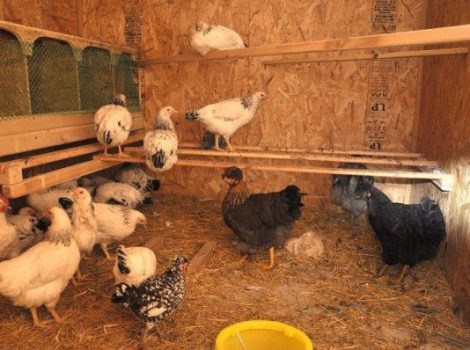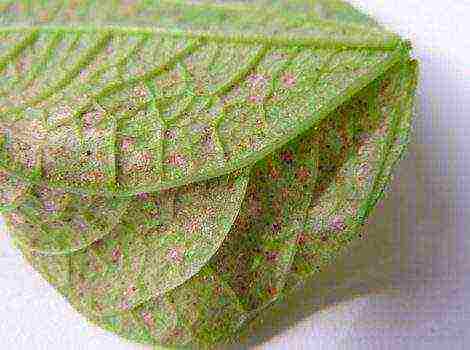Symptoms and treatment of coccidiosis in chickens and chickens
Chickens, like all other types of poultry, are susceptible to infections. But during breeding, it is important to know the types of diseases of chickens and how they should be properly treated. The disease of coccidiosis in chickens and chickens remains especially relevant. It can lead to the death of a large number of birds in a few days.
Therefore, in order to avoid these troubles, the poultry farmer needs to know the symptoms of coccidiosis in chickens, turkey poults, broilers and adult chickens, the rules of treatment, and most importantly the drugs that can cure the infection of birds. But first things first.
Signs and symptoms of coccidiosis
First, let's take a look at what coccidosis is in a bird. It is an infectious disease that is common in the poultry industry. The causative agents of infection are coccidia. They enter the body of birds through food, water, inventory. There are several types of causative agents of this infection. In chickens, coccidiosis is caused by one type of bacteria - eimeria tenella.
But you should pay attention to the following signs and symptoms of coccidosis in chickens:
- Poor appetite or no appetite at all;
- Plumage modification;
- Laying hens begin to lay eggs less or stop laying completely;
- Feces acquire a liquid consistency, foam and blood impurities appear;
- Bird carcasses take on a bluish tint.
These symptoms last 4 days and after that the birds die. In dead chickens, the stomach is distended and filled with liquid feces with red dots. It is worth paying attention to one more symptom - the processes of the intestine. They look like an inflated glove.
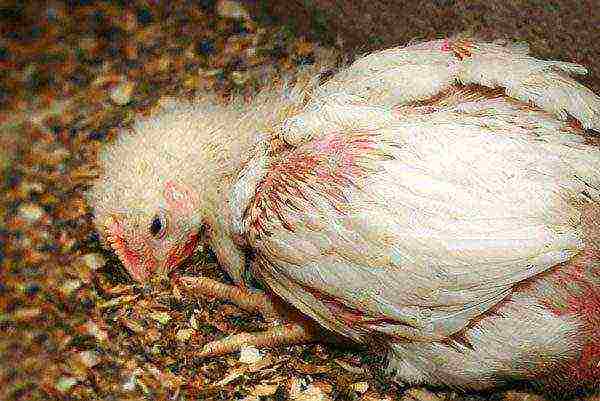
How to treat
If chickens develop these symptoms, then it is safe to say that individuals are sick with coccidiosis. In this case immediately begin treatment of coccidosis in chickens and chickens... Coccidiosis can be treated with different drugs, each of them affects the pathogens and, as a result, leads to their death.
Consider the types of drugs used to treat coccidiosis.
Koktsidiovit: instructions for use
Let's analyze the instructions for the drug. This medicinal product is suitable for treating juveniles and chickens. In coccidiosis, the drug is highly effective. The main components of the product are 120 mg of amprolium hydrochloride, 10,000 E of vitamin A and 2 mg of vitamin K, act on pathogens, lead to a halt in their development and, as a result, to death.
When signs of coccidiosis appear, the drug is used according to the following scheme:
- For prevention - 1.25 grams of the drug is added to 1 kilogram of pure feed. Everything gets mixed up;
- For treatment 2.5 grams of medicine is added to 1 kilogram of feed. Everything mixes well;
The duration of prophylaxis and treatment is 7 days. Poultry slaughter is carried out on the 7th day after the last drug intake.

Coccidiostatics: treatment for poultry and broilers
Coccidiostatics are medicines used to treat coccidiosis in poultry. These products are added to feed for chickens and chickens. When the medicine enters the body of birds, the active substances have a suppressive effect on the causative agents of the disease and, as a result, stop their development.
Coccidiostatics include the following drugs:
- Avatek 15%;
- Aviax 5%;
- Coccidin-10;
- Coccisan 12%;
- Madikos;
- Nikarmix 25%.
Avatek 15%
This remedy has a broad effect on coccidia. The composition includes the active ingredient sodium lasalocide 15%. It is used for the treatment and prevention of coccidiosis.
How it is applied:
- 0.5 grams of powder per 1 kilogram of feed. Everything is mixed and given for preventive purposes;
- 1 gram per kilogram of feed during coccidiosis treatments.
The course of treatment and prevention is 5 days.
Aviax 5%
This agent belongs to ionophore glucoside coccidiostatics with a broad spectrum of action on coccidia coccidiosis in poultry. The active ingredient of the product is semduramycin 5%. It is used for the prevention and treatment of coccidiosis in chickens and chickens.
Mode of application:
- For prevention - 0.5 grams of the drug is added to 1 kilogram of feed;
- During treatment - 1 gram of the product is added per kilogram of feed.
The course of prevention and treatment is 5 days.
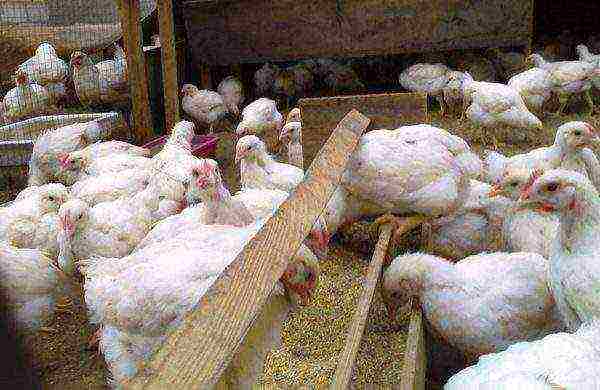
Coccidin-10
The remedy has a broad effect on coccidia. It is used for the treatment and prevention of coccidiosis in adult hens and chickens. The active ingredient, toluamide, has a suppressive effect on the causative agents of coccidiosis.
How to apply for chickens and chickens:
- During prevention - for 1 kilogram of feed, add 0.5 grams of the product and mix. Feed the bird with this mixture throughout the day;
- During treatment - 1 gram of the preparation is added to 1 kilogram of feed. Everything is well mixed, the mixture is given during the day.
The course of treatment is 5 to 7 days.
Koktsisan 12%
The drug is used for the treatment and prevention of coccidiosis in poultry. It is produced in the form of a powder with a fine-grained structure. The color of the powder is light brown. The active ingredient is sodium salinomycin. The main component suppresses and stops the development of coccidia.
How to apply:
- For prevention - for 1 kilogram of the feed mixture, 60-120 mg of the drug should be added;
- During treatment - 120 mg of the drug is added per kilogram of feed.
The feed mixture with the medicine is given throughout the day. The next day, the food with the medicine is not used, a new one is prepared.
The course of treatment and prevention is 5-7 days.
You may also be interested to know:
- Symptoms and treatment of broiler diseases.
- How to care for laying hens at home.
- How to feed chickens from the first days of life to raise healthy chickens.
Madicox
This product is in the form of a powder, it is poorly soluble in water. The color of the powder is gray-white or gray-brown. The active ingredient is ammonium muduramycin. The main component has a suppressive effect on the development of coccidia. Has a wide effect on the causative agents of coccidiosis at different stages. It is used for the prevention and treatment of coccidiosis in chickens and chickens.
How to apply:
- During prevention - 0.5 grams of the drug is added to 1 kilogram of feed. The food with the medicine is mixed and given during the day;
- During treatment - for 1 kilogram of feed, 0.5-1 gram of the product is added. All components are thoroughly mixed. The mixture is given throughout the day.
The course of treatment and prevention lasts from 5 days to 7 days.
Nikarmix 25%
Nikarmix 25% is a chemical coccidiostatic with a wide range of effects. It is produced in the form of yellow granules with a low odor. The active ingredient is nicarbazine 25%.The active substance acts on the causative agents of coccidiosis and causes their death. The drug is used to treat coccidiosis in chickens and chickens.
How to apply:
- During prevention - 0.5 grams of medicine is added to 1 kilogram of feed. Everything is mixed and given throughout the day;
- During treatment - 0.5-1 gram of medicine is added to 1 kilogram of feed. Everything is mixed and given throughout the day.
For chickens, the remedy is given for prophylaxis, starting from the first day of life and in the subsequent growing period. In addition to treating coccidiosis, the drug increases the immune system and the protective properties of the body of chicks.
The course of treatment and prevention is 4-7 days.
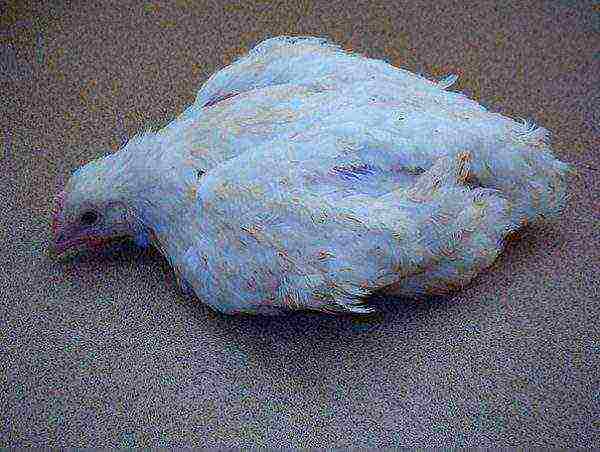
Coccyprodin: home use
Coccidrodin is used for the prevention and treatment of coccidiosis in poultry. The medicine, entering the bird's body, affects the coccidia and leads to a change in the microstructure of the organism of the pathogens. The drug is used at different stageswhile it kills bacteria and does not adversely affect the immunity of the bird.
It is produced in the form of a clear solution with a light yellow or dark yellow color. Has a specific smell. During the treatment of coccidiosis in chickens and chickens, the medicine is given along with water. 1 ml of pure solution is added to 1 liter of water. Water with a solution is given to drink during the day. The course of treatment is 2 days; in severe conditions, it is recommended to increase the treatment to 5 days.
Baycox
The drug is widely used for the prevention and treatment of coccidiosis in hens, chickens and broilers. During treatment and prophylaxis, the remedy is given along with water.
The medicine is diluted in water in the following dosages - 1 ml of 2.5% medicine is added to 1 liter of water and mixed. The solution is given to a sick bird for 2 days. In severe forms, treatment is extended up to 5 days.
Features in chickens
The disease of coccidiosis in broiler chickens is especially dangerous. The causative agents of the disease - coccidia, develop and multiply in the intestines of individuals and lead to the death of epithelial cells. As a result, there is a violation of the integrity of the structure of the intestinal walls, and necrosis occurs. Further, there is a violation of peristalsis and absorption, as a result, this causes a lack of nutrients and leads to hungry edema.
Under these conditions, 2-3 days are enough for the pathogen to fully mature. The causes of the appearance of the disease are a change in feed, stressful situations. That is why it is important to know how and how to treat coccidiosis in chickens.
Features in broilers
Coccidiosis poses a danger to broilers, especially to young animals. The course of the disease is rapid and in a few days it affects a large number of individuals. The development of bacteria occurs in the intestines and in 2-3 days the number of coccidia can reach up to several thousand. As a result, the bird becomes lethargic, its appetite disappears, the structure of plumage is disrupted.I. The digestibility of nutrients is impaired, this all leads to hungry edema and the death of broilers.
Insects, people, and tools can become sources of infection. Treatment of coccidiosis in broilers should be carried out as quickly as possible.

Features in adult chickens
In chickens, coccidiosis is caused by pathogens - eimeria tenella. The pathogens enter the intestines of birds along with contaminated food or water. For 2-3 days, they affect the intestinal mucosa. The result is bloating, necrosis and hemorrhage. In the organism of individuals nutrients cease to be absorbed, there is an accumulation of harmful substances that cause complete poisoning of the body.
Oocysts come out with the feces of a sick birdthat gets on feed, water, bedding. As a result, the oocysts are eaten by other healthy individuals, and the disease spreads to all birds. As a result, individuals completely die.
Prophylaxis
Be sure to remember the following recommendations that you follow during prophylaxis for coccidiosis:
- Due to the fact that low temperatures and environmental conditions do not affect coccidia, it is better to burn walls and work equipment with a soldering iron, this will ensure the complete death of pathogens;
- Litter for birds should always be dry;
- You need to add table salt to the feed, crushed seashells. These components will help prevent the occurrence of infection;
- Vaccination against coccidiosis. It strengthens the immune system and increases the body's resistance to infections, including coccidiosis.
Coccidiosis in chickens and chickens is a serious infectious disease that affects individuals in a short period. The disadvantage of this infection is that at the initial stages it does not manifest itself in any way, sometimes you may not know about the presence of this disease in chickens and chickens.
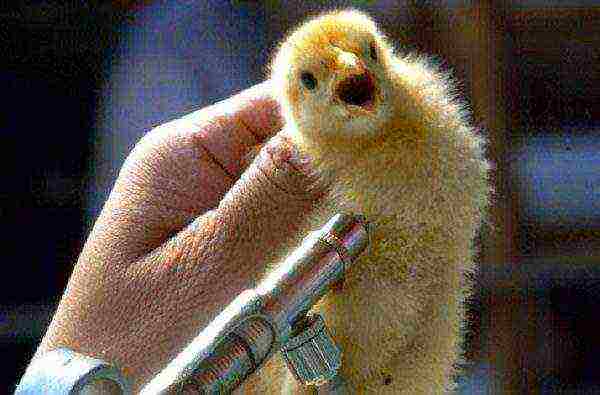
Therefore, it is better to secure your poultry farm in advance. From the first day of life of chicks, prophylaxis with drugs against coccidiosis. Prevention will help prevent disease, as well as strengthen immunity and increase the body's resistance to coccidiosis... Now you know how to treat coccidiosis in chickens at home and will do your best to save your bird.
